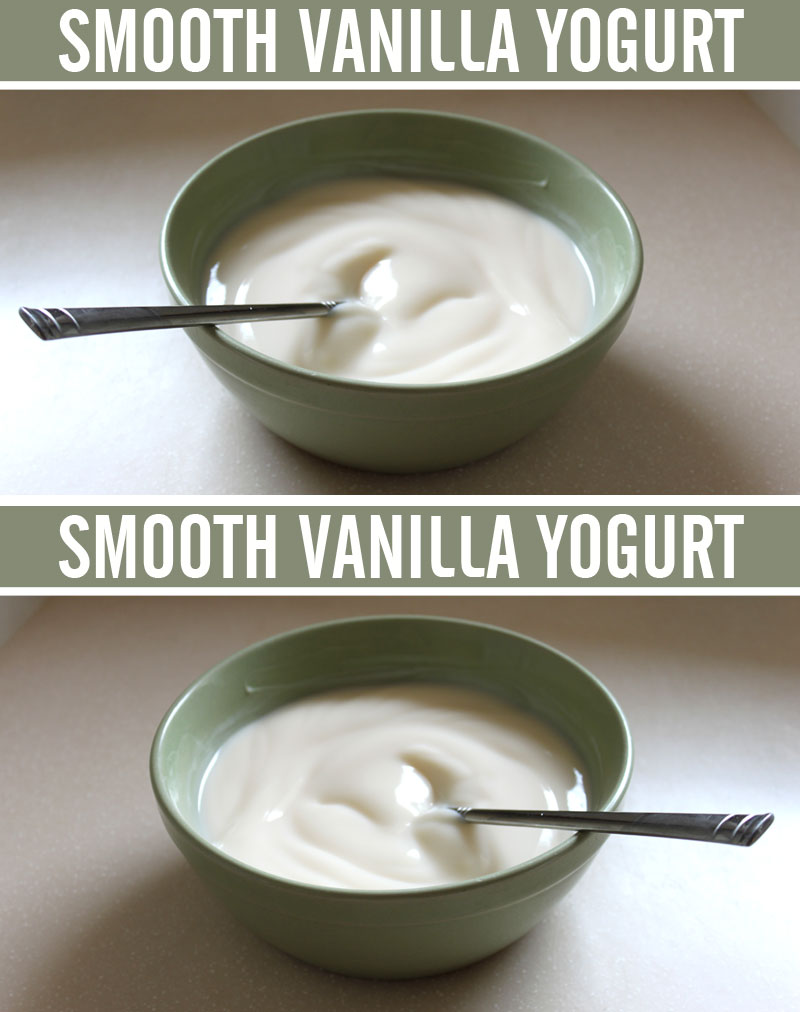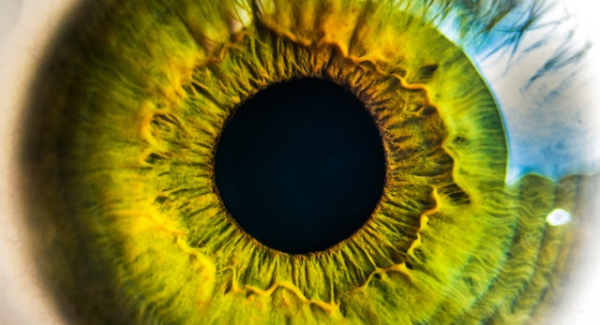“Mental simulation”—interacting mentally with an object—is an important part of our daily interactions. We review literature that provides evidence that humans mentally simulate automatically in preparation for object interactions. We also discuss our research showing how simple object orientation can change mental simulation and thus purchase intention. This review should provide practitioners and curious intellectuals a primer for understanding this fascinating area of human thought.
Our lives are filled with repetitive behavior. Take, for example, your daily dinner routine. You pull out your chair, take a seat in front of your plate, reach for your fork or spoon, and begin to eat. Occasionally you grab for your glass, drink from it, and place it back on the table. Even those of us who may eat at a different restaurant every night still proceed through the same set of behaviors. However, you don’t consciously think about these behaviors, such as reaching for your fork and then chewing your bite, nor would you want to. Because your cognitive resources are limited (Miller, 1956), you’d rather devote your mental capital to the conversation you are having with a friend or colleague or family member. Fortunately, your brain has stored these routinized processes and behaviors in memory, and automatically and unconsciously plays them back upon encountering the physical object—or even a representation of the object. This play back of processes is what Barsalou (2008) refers to as mental simulation within a grounded cognition framework.
The theory of grounded cognition proposes that our thoughts are derived from our bodily states, our environment, and our actions, as well as from mental simulations (Barsalou, 2008). In this article, we focus exclusively on mental simulation. Although mental simulation has only recently been formally proposed as a fundamental aspect of how we think, researchers have studied it for several decades. Such studies have demonstrated the existence of mental simulation from an experimental perspective; more recently, they have also done so using brain-scanning technology. Finally, researchers, including us, have begun to explore how mental simulation affects our attitudes and behaviors. We address each of these three areas in turn.
Experimental evidence of mental simulation
We frequently use our hands to interact with objects, reaching for them, grasping them, and manipulating them. Consequently, one of the more commonly studied forms of simulation is motor simulation, or the simulation of action from a visual cue. Psychologists Tucker and Ellis (1998, 2001, 2004) have been instrumental in providing behavioral support for motor simulation.
Because mental simulation within the grounded cognition framework is defined as an automatic, unconscious process, asking participants about their simulations makes little sense. Researchers therefore have to develop clever ways to show that mental simulation is occurring. In one of their first sets of studies, Tucker and Ellis (1998) had participants view a series of common items (e.g., frying pan, tea kettle, dustpan) and indicate whether they were upright or inverted. Each picture was shown with the handle either on the right or the left, which was irrelevant to the response. By pressing a key with either hand, participants indicated if an object was upright or inverted. The specific actions (right for inverted, left for upright, or vice versa) were randomly assigned to participants. The researchers ultimately found that when the handle orientation matched the correct response (e.g., left-facing upright frying pan paired with a left-key press), reaction time was faster than when the handed orientation did not match the correct response (e.g., left-facing upright frying pan paired with an upright right-key press). This finding suggests the mind is quicker when grip-orientation and response match. The readiness of the participants’ minds was a result of mentally simulating interaction with the object.
Tucker and Ellis (2004) later moved beyond product orientation to examine the impact of product size on mental simulations of motor behavior. Participants viewed objects and indicated as quickly as possible whether an object was natural or man-made. The apparatus the participants received had two buttons: one held between the thumb and forefinger, and the other held in the palm of the same hand. To indicate an answer, participants thus either pinched their fingers together or squeezed their palm. The researchers found that participants were quicker to categorize objects when the size of the object matched the response grasp. For example, participants were quicker to indicate a grape was natural with a pinch of the thumb and forefinger than a squeeze with the palm. Similarly, participants were quicker to indicate a hammer was man-made with a squeeze of the palm than a pinch. Again, these findings suggest participants’ minds are readied through mental simulation at a more automatic level.
These results are suggestive of the occurrence of mental simulation. Fortunately, these findings within a behavioral context have been corroborated by more exact measurements: neuroscience.
Neuroscientific evidence of mental simulation
Despite a longstanding debate regarding whether sensory images exist in the brain in a modal manner (see Kosslyn, Ganis, & Thompson, 2001 for a brief review), recent neuroscience evidence provides overwhelming support for the notion that the same brain areas are active during actual perception are active during imagery of a sensory experience. Using brain-imagining technology (e.g., functional magnetic resonance imaging, fMRI), researchers have explored the activation of different brain areas during perception and conscious forms of imagery. The mapping of neural activity between perception and conscious imagery is not a one-to-one relationship; however, the overlap is significant and provides support that conscious imagery can be a perceptual experience.
The neuroscience literature has additionally shown that these perceptual images and their neural correlates are activated automatically, through mental simulation, in response to simply viewing pictures or reading words. For example, viewing pictures of food items (e.g., a hamburger or spaghetti) activates brain areas associated with taste (Simmons, Martin, & Barsalou, 2005). Reading words with strong smell characteristics (e.g., coffee or vomit) activates brain areas associated with smell (González et al., 2006). Additionally, mirror neuron evidence suggests that simply observing another perform actions leads to neural activity similar to oneself performing the same action (see Rizzolatti and Craighero 2004 for a review). This fMRI evidence shows that pictures and words of objects and experiences can lead to automatic mental simulations.
In addition to the behavioral evidence regarding motor simulation (Tucker and Ellis 1998, 2004), researchers have also used brain-imaging technology to examine motor simulation. For example, viewing and naming pictures of tools that can be grasped with the hand (e.g., a wrench) activated premotor areas of the brain to a greater extent than viewing and naming pictures of non-graspable items (e.g., an elephant; Chao & Martin, 2000). Grèzes and Decety (2002) replicated the findings from Tucker and Ellis (2001) and showed considerable overlap in brain activity for deliberately imagining a motor action with a tool and simply viewing a picture of the tool.
The neuroscience research provides compelling evidence for the existence of mental simulations at a more automatic level. What do these simulations ultimately mean for us in our daily lives? We next explore the applications of mental simulations, with a particular focus on consumer contexts.
Applications of mental simulation
Given the fact that people automatically mentally simulate many of the perceptual experiences in our environment, we (Elder & Krishna, 2012), as well as other researchers (e.g., Eelen, Dewitte, & Warlop, 2013; Shen & Sengupta, 2012; Ping, Dhillon, & Beilock, 2009), have sought to understand the evaluative and behavioral consequences of such simulations. Particularly, we explore the impact of mental simulations on consumer behavior within an advertising context.
One of the particularly relevant consequences of mental simulation is the likelihood of someone purchasing the product advertised. As we imagine ourselves doing something, we’re more likely to intend to perform that behavior (Anderson, 1983). We expected this increase in behavioral intention would also occur for experiences simulated at a more automatic level.
We know from prior experimental and neuroscience research that our minds simulate motor behavior, or interacting with objects with our hands at an automatic level. But what are the characteristics of stimuli (pictures) that make mental simulation more likely? Mental simulations are essentially automatic replays of prior experiences from memory. Thus, pictures that look like our everyday environment should lead to mental simulations. One simple manipulation of this concept is to have a mug with the handle pointed to the right or left. For a right-handed person, having the handle on the right should facilitate greater simulation than having the handle on the left; the converse is true for a left-handed person.
 A typical study we conducted has participants view one of two advertisements: one with the product oriented toward the right and one with the product oriented toward the left. Participants view the advertisement and then provide their purchase intentions. The basic finding across studies is that orienting the product toward the viewer’s dominant hand leads to higher purchase intentions than orienting the product toward the viewer’s non-dominant hand. For example, in one of our studies, participants viewed a picture of a bowl of yogurt. This bowl of yogurt had the spoon oriented toward either the left or right. We additionally included a control condition without a spoon. We found the orientation of the spoon mattered, with purchase intentions being significantly higher when the spoon matched the participant’s dominant hand. Such a subtle manipulation as mirroring the visual contained within an advertisement leads to important downstream consequences on behavioral intentions.
A typical study we conducted has participants view one of two advertisements: one with the product oriented toward the right and one with the product oriented toward the left. Participants view the advertisement and then provide their purchase intentions. The basic finding across studies is that orienting the product toward the viewer’s dominant hand leads to higher purchase intentions than orienting the product toward the viewer’s non-dominant hand. For example, in one of our studies, participants viewed a picture of a bowl of yogurt. This bowl of yogurt had the spoon oriented toward either the left or right. We additionally included a control condition without a spoon. We found the orientation of the spoon mattered, with purchase intentions being significantly higher when the spoon matched the participant’s dominant hand. Such a subtle manipulation as mirroring the visual contained within an advertisement leads to important downstream consequences on behavioral intentions.
Will these results for the match effect always hold? Prior research would suggest not. A number of previous studies show a strong connection between perception and our thought processes. For example, holding a pen in your mouth makes it harder to smile, which makes comics less funny (Strack, Martin, & Stepper, 1988). Botox in the forehead makes furrowing your brow nearly impossible, which makes recognizing emotions such as anger and sadness more difficult (Havas, Glenberg, Gutowski, Lucarelli, & Davidson, 2010). Remembering information you’ve heard is harder when the message itself contains auditory imagery, because these processes compete for resources (Unnava, Agarwal, & Haugtvedt, 1996).
In our context, therefore, you should only be able to mentally simulate interacting with the product in the advertisement if you have your hands free. Having your hands occupied should place a restriction on the resources you need for simulation. We tested the impact of occupying resources as well by having participants hold clamps in their hand(s) while viewing the advertisement. Specifically, we had four conditions: holding a clamp in the dominant hand, holding a clamp in the non-dominant hand, holding a clamp in each hand, and not holding clamps at all. Participants then viewed an advertisement for cake, where the fork was on the left or on the right (match or mismatch to the participant’s handedness). As expected, when participants were not holding any clamps, the match condition led to higher purchase intentions than the mismatch condition. When participants held the clamp in their non-dominant hand, the same results held, because participants could still simulate with their dominant hand. However, when participants held the clamp in their dominant hand, the mismatch orientation led to higher purchase intentions than the match condition. Holding the clamp in their dominant hand left their non-dominant hand free, making the mismatch orientation a match condition. When participants were holding clamps in both hands, the orientation didn’t matter as much, because neither hand was available for simulation.
The general finding that having participants hold something in their hand impacts motor simulation and consequent evaluations was recently replicated by Shen and Sengupta (2012). In addition, the researchers found that if the object held matched the object in the picture (e.g., holding a fork while viewing a picture of noodles), participants mentally simulated the action more easily, leading to higher evaluations of the object.
The positive impact of matching the object orientation to handedness makes sense when the object is positive, but what about when the object is negative? Mental simulation should make a good thing better, but a bad thing worse. Think about going to the dentist, which for most of us isn’t the most enjoyable experience. If you don’t imagine the experience, it’s bad, but not awful. However, if you start to imagine the prick of the needle for lidocaine, the grinding and scraping feel of the tools, and the damp, burning smell from your teeth, suddenly the dentist seems worse. We explored this concept with conditions of automatic mental simulation. We found that mental simulation has a magnifying effect. When participants were presented with a good experience (asiago cheese and tomato soup), the match between orientation and handedness led to higher purchase intentions than the mismatch. But when participants were presented with a bad experience (cottage cheese and tomato soup, which was pretested to be a negative experience for the population), the match led to lower purchase intentions than the mismatch.
Although there may be situations in which mental simulation is inhibited (e.g., while holding something), or in which simulation leads to negative consequences (e.g., when the object is negative), when the mind simulates motor experiences at a more automatic level, the consequences are generally positive.
What this growing body of work on more automatic mental simulations tells us is that our minds are learning from our bodily states and experiences. In turn, we use this learned information in preparation for interaction with our environment. We specifically focused this review on motor simulation; however, automatic simulation of other sensory experiences, such as taste, touch, and sound, provide equally intriguing areas for further exploration.
References
Anderson, C. A. (1983). Imagination and Expectation: The Effect of Imagining. Journal of Personality and Social Psychology, 4(2), 293-30.
Barsalou, L. W. (2008). Grounded cognition. Annu. Rev. Psychol., 59, 617-645.
Chao, L. L., & Martin, A. (2000). Representation of manipulable man-made objects in the dorsal stream. Neuroimage, 12(4), 478-484.
Eelen, J., Dewitte, S., & Warlop, L. (2013). Situated Embodied Cognition: Monitoring Orientation Cues Affects Product Evaluation and Choice. Journal of Consumer Psychology.
Elder, R. S., & Krishna, A. (2012). The “visual depiction effect” in advertising: Facilitating embodied mental simulation through product orientation. Journal of Consumer Research, 38(6), 988-1003.
González, J., Barros-Loscertales, A., Pulvermüller, F., Meseguer, V., Sanjuán, A., Belloch, V., & Ávila, C. (2006). Reading cinnamon activates olfactory brain regions. Neuroimage, 32(2), 906-912.
Grèzes, J., & Decety, J. (2002). Does visual perception of object afford action? Evidence from a neuroimaging study. Neuropsychologia, 40(2), 212-222.
Havas, D. A., Glenberg, A. M., Gutowski, K. A., Lucarelli, M. J., & Davidson, R. J. (2010). Cosmetic use of botulinum toxin-A affects processing of emotional language. Psychological Science, 21(7), 895-900.
Kosslyn, S. M., Ganis, G., & Thompson, W. L. (2001). Neural foundations of imagery. Nature Reviews Neuroscience, 2(9), 635-642.
Miller, G. (1956). The magical number seven, plus or minus two: Some limits on our capacity for processing information. The Psychological Review, 63, 81-97.
Ping, R. M., Dhillon, S., & Beilock, S. L. (2009). Reach for what you like: The body's role in shaping preferences. Emotion Review, 1(2), 140-150.
Rizzolatti, G., & Craighero, L. (2004). The mirror-neuron system. Annu. Rev. Neurosci., 27, 169-192.
Shen, H., & Sengupta, J. (2012). If you can't grab it, it won't grab you: The effect of restricting the dominant hand on target evaluations. Journal of Experimental Social Psychology, 48(2), 525-529.
Simmons, W. K., Martin, A., & Barsalou, L. W. (2005). Pictures of appetizing foods activate gustatory cortices for taste and reward. Cerebral Cortex, 15(10), 1602-1608.
Strack, F., Martin, L. L., & Stepper, S. (1988). Inhibiting and facilitating conditions of the human smile: A nonobtrusive test of the facial feedback hypothesis. Journal of Personality and Social Psychology, 54(5), 768-777.
Tucker, M., & Ellis, R. (1998). On the relations between seen objects and components of potential actions. Journal of Experimental Psychology-Human Perception and Performance, 24(3), 830-846.
Tucker, M., & Ellis, R. (2001). The potentiation of grasp types during visual object categorization. Visual Cognition, 8(6), 769-800.
Tucker, M., & Ellis, R. (2004). Action priming by briefly presented objects. Acta Psychologica, 116(2), 185-203.
Unnava, H. R., Agarwal, S., & Haugtvedt, C. P. (1996). Interactive effects of presentation modality and message-generated imagery on recall of advertising information. Journal of Consumer Research, 81-88.


